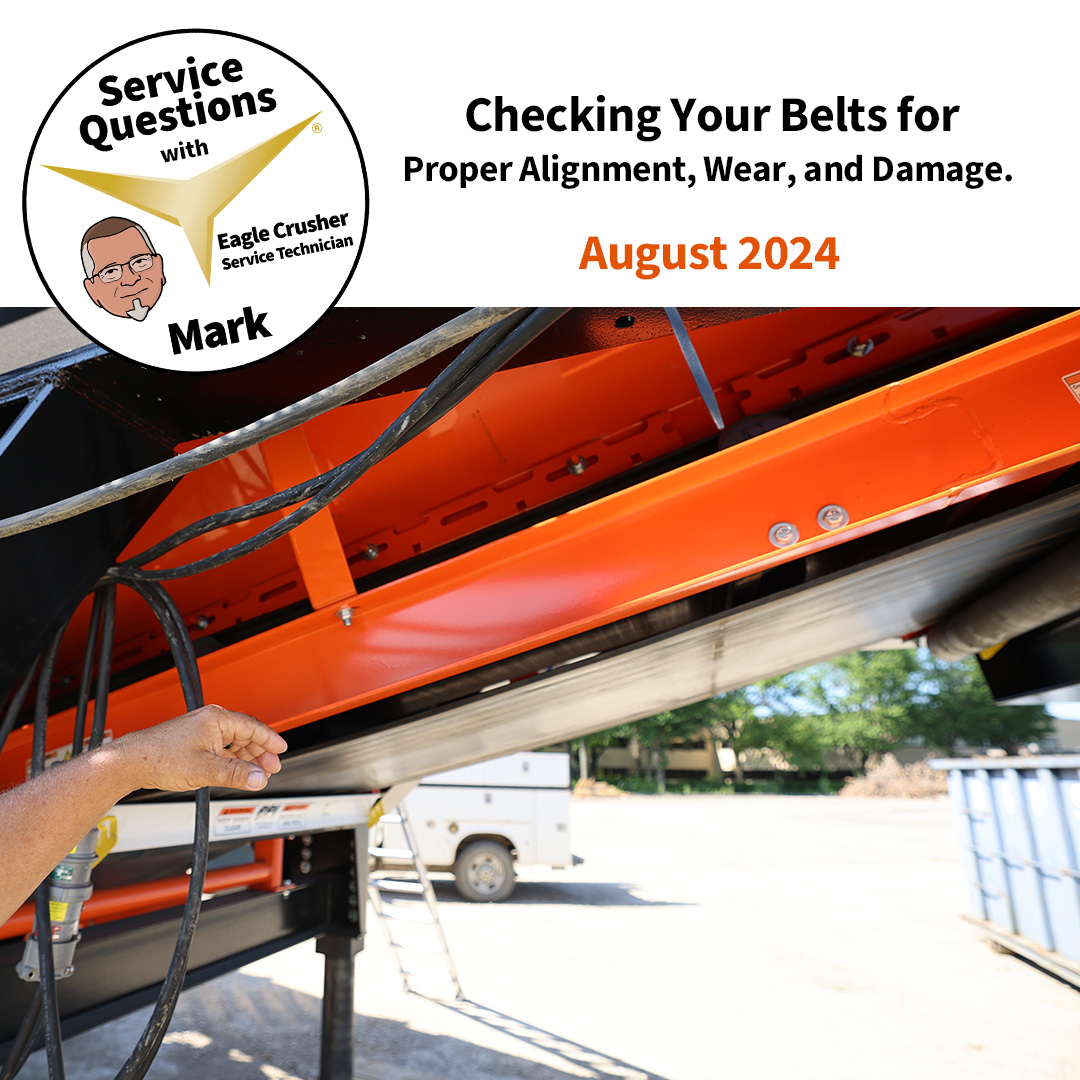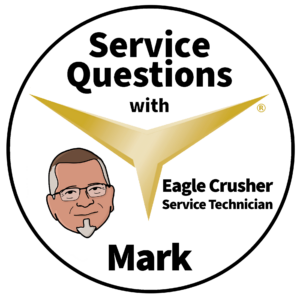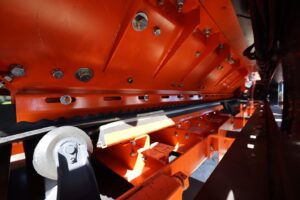Blog
Service Questions: Belt Alignment, Wear, and Damage

Service Questions with Mark: Checking Your Belts for Proper Alignment, Wear, and Damage.
As we celebrate a year of “Service Questions,” we want to extend our heartfelt gratitude to everyone who has been part of this incredible journey. Your curiosity and commitment to learning more about rock crushers and their proper maintenance have been truly inspiring. Over the past year, we’ve explored various aspects of rock crusher operation, shared insights, and tackled common issues together. Today, we dive into yet another essential topic that plays a critical role in the efficiency and longevity of your equipment: belt alignments, wear, and damage. Proper belt maintenance is crucial for preventing downtime and ensuring your rock crusher operates at its best. Let’s dive in and learn how to keep your belts in top condition.

How often should I check my belts?
Your belts should be checked daily for wear and tear from material as well as damage from things like rebar.
How do I know if my belts are not properly aligned?
If you find that your belts are wearing on the edges, this is a good sign that your belt is running out of alignment. It is recommended that you take the small amount of time it takes to properly realign the belt. This small fix will be quicker and more efficient than replacing the belt. If the belt is not properly aligned, it runs the risk of catching on something and being shredded in the process. Realigning will not only save down time but will also prevent unnecessarily early wear part replacements.
If I find a small tear on my belt, do I have to replace the entire thing?
Small tears can be and should be repaired immediately before they become a larger issue that would require the entire belt to be replaced. Small repairs can be made easily with Flexco® 140 clips or similar fasteners. The 140 clips, which are shorter in length than the 190 clips, are better for belts that are running on conveyors with smaller head pulleys as it is easier for them to handle the smaller circumference.
What else should I check on my belts?
Another belt related issue is that all areas that come in contact with heavy material flow have what is called “rubber flashing”. The flashings’ purpose is to prevent material from discharging all over the ground and not going out to product piles as intended. This flashing will wear overtime and should checked daily and adjusted if needed to make contact with the belt’s surface. It is usually as simple as loosening the clamp plates and lower rubber flashing to belt surface and retighten clamp plate.

Of note, there is also rubber flashing where the hopper/feeder enters the feed box on the Impactor housing. This should be adjusted if you notice material leaking in this area.
Of course, it is critical to lock-out/tag-out the crushing plant and other equipment, like discharge conveyors, prior to conducing any inspections or repairs to avoid injuries or death from coming into contact with moving components.
What should I do if I have other questions?
You have multiple resources at your disposal: the owner’s manual, your local, authorized Eagle Crusher dealer, or Eagle Crusher’s service department. Eagle Crusher has a wide network of knowledgeable and eager to help team members to help assist you in any way you need it.
Continuing Your “Service Questions” Journey
As we wrap up this discussion on belt alignments, wear, and damage, we encourage you to catch up on our other “Service Questions” blogs. Each post is packed with valuable insights and practical tips to enhance your understanding and maintenance of rock crushers. Our journey of learning doesn’t stop here—there’s always more to discover and improve. Stay tuned for more expert advice, like next month’s “Service Questions” as James talks about how to properly install and tighten screen cloth. As always, keep those questions coming!


